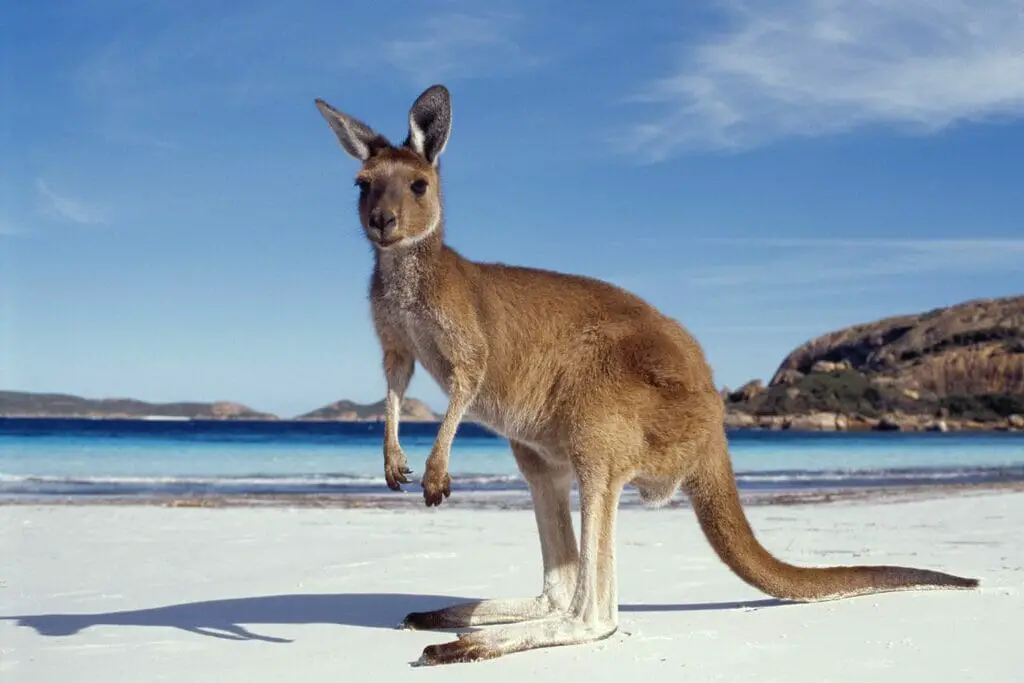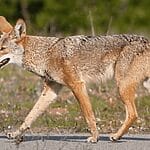Kangaroos are a unique member of the marsupial family. With their pouches and hopping way of life, kangaroos are an important part of Australia’s ecosystem and culture, for that matter.
The marsupial family is home to 50 species of kangaroo, but each one has a different average lifespan.

Some of these animals have been studied for centuries, whilst others are rarely seen, meaning it has been a challenge for experts to understand their estimated lifespan.
Kangaroos are one of the most studied species of the entire marsupial family, however. Therefore, we know a lot about some of these incredible creatures, including their typical life cycle.
That being said, we know more about some kangaroos compared to others. For instance, the Eastern Gray, Red, and Western Gray kangaroos are more common, so we understand their life cycles better.
Join us today as we find out the average lifespan and life cycle of these herbivorous mammals. We will discuss everything you need to know about the life of a kangaroo, so you can impress your friends and family at the next quiz night!
Kangaroo Life Cycle
The life cycle of a kangaroo begins with sexual reproduction, like all other mammals. The fertilized egg gradually develops into a kangaroo embryo, but this is a little different to other mammal embryos.
Rather than embedding itself in the mother’s placenta for nourishment, a kangaroo embryo feeds off the yolk sac of the egg. Within a month, the content of this sac is used up by the developing kangaroo.
The kangaroo embryo is at a very young stage of development at this point. At around an inch long, it is hairless and blind, with its back legs nothing more than stumps.
However, when the kangaroo is born, it will use its front legs to clamber out of its mother’s birth canal and into the pouch.
Here, the baby kangaroo will suckle on one of its mother’s teats. And, this will be its only source of food for the first six months of its life.
Kangaroo Development
After the first six months or so of life, the kangaroo has developed quickly, becoming a fully fledged baby, otherwise known as a joey.
Once it becomes a joey, the kangaroo will be large enough to peek outside the pouch before leaving to graze solo.
Before long, the joey gradually becomes more independent, spending more time outside the pouch. But, the first few weeks will see it return to feed and sleep, and hide when it feels in danger.
Once the kangaroo reaches one or two months old, it permanently moves out of its mother’s pouch and starts to live alone. And so the adventure begins.
Kangaroo Average Lifespan
In general, a wild kangaroo tends to live about six years. However, when in captivity, they can live up to 20 years.
Unfortunately, the mortality rate of kangaroo embryos and joeys is very high. Therefore, many kangaroos never even reach maturity.
Other factors also pose serious danger to young kangaroos, such as snakes, wild dogs (dingos in Australia), foxes, and large eagles.
Living in herds known as “mobs,” kangaroos stick together as a way of defense against predators and protection. If predators are present, a mob of kangaroos will typically flee. But, if the kangaroo is on its own, it may fight back by biting and kicking.
Although the lifespan of a wild kangaroo is pretty short and many never reach maturity, they remain the most dominant native mammal in Australia.
Let’s take a look at the average lifespan of three of the most common kangaroos down under:
- Eastern Grays
- Western Grays
- Giant Reds
Eastern Gray Kangaroo Lifespan
Eastern Gray kangaroos typically grow to around five or six feet tall. Slightly heavier and shorter than the largest Red kangaroos, the Eastern species mostly inhabit the east coast of Australia.
The average lifespan of Eastern kangaroos in the wild is about eight to twelve years, whereas those in captivity can expect to live for up to twenty years.
Western Gray Kangaroo Lifespan
Western Gray kangaroos mostly live in western and southern regions of Australia. They are typically thinner, smaller, and lighter than their Eastern Gray counterparts.
And, similarly, a Western Gray kangaroo’s lifespan, when in the wild, is about nine to thirteen years on average. In captivity, they can live for up to twenty years.
Giant Red Kangaroo Lifespan
Giant Red kangaroos are the largest of all kangaroos, and all marsupials for that matter.
Growing up to seven feet tall, these kangaroos also tend to outlive other kangaroo species, with an average lifespan of twenty two years in the wild, but sixteen years in captivity.
Therefore, Giant Reds buck the trend of living longer in captivity. This is probably because of their dominant size and nature, meaning they are not prone to as much danger as smaller kangaroos when in the wild.
Most Giant Red kangaroos live in the central areas of Australia, otherwise known as the outback.
Kangaroo Population

The kangaroo population is always up for debate, especially in Australia. Seen as pests by many in the country, there have been calls to cull the number of kangaroos for many years.
In recent years, for instance, Australians have been urged to eat more kangaroo meat to cut the population.
In 2019, the Australian government estimated that there were around 42.8 million kangaroos in Australia. However, this was down from 53.2 million just six years earlier.
In 2021, it is estimated that these numbers once again rose to around 50 million, but the true number is very difficult to know for sure.
When you compare the estimated number of kangaroos in Australia (50 million) to the number of people (25 million), it is no surprise that many feel their population numbers are getting out of control, with some referring to the numbers as “plague proportions.”
Most Common Causes Of Death In Kangaroos
Although the number of kangaroos in the wild is large, there are many dangers that face these marsupials. That is why many never reach maturity and die at very young ages.
The main causes of death in kangaroos are as follows:
- Nutrient deficiency
- Their teeth wear down so much that it makes it impossible for them to eat
- Predators (i.e. dingos, foxes, eagles, and snakes)
- Human activity, such as hunting, and habitat loss. Vehicle accidents also cause a number of kangaroo and human deaths each year. In fact, 9/10 accidents involving animals in Australia involve a kangaroo.
- Diseases such as digestive tract issues, pneumonia, and toxoplasmosis. Lumpy jaw disease is also common in kangaroos where their neck and jaw become inflamed. This then spreads to other areas of the body, eventually killing the kangaroo.
- Bushfires (Smaller kangaroos are particularly in danger as they can not escape quick enough)
In Summary
Kangaroos typically live for about six years on average in the wild. But, when in captivity, some can live for twenty years or more.
The lifespan of a kangaroo depends on the species as size tends to have a big say on how safe they are in the wild. The larger a kangaroo, the fewer predators it will have to deal with, therefore, living a longer life.








